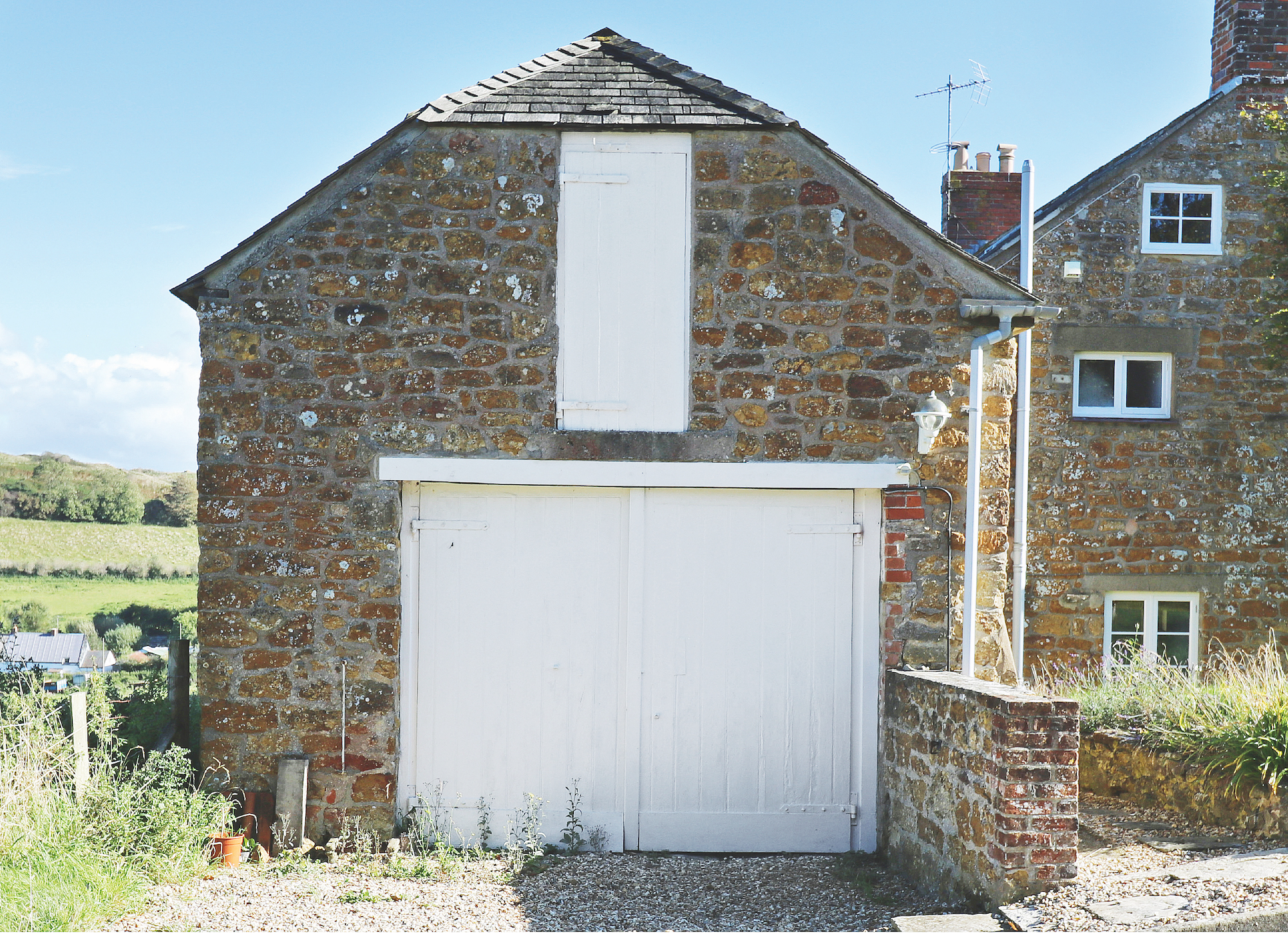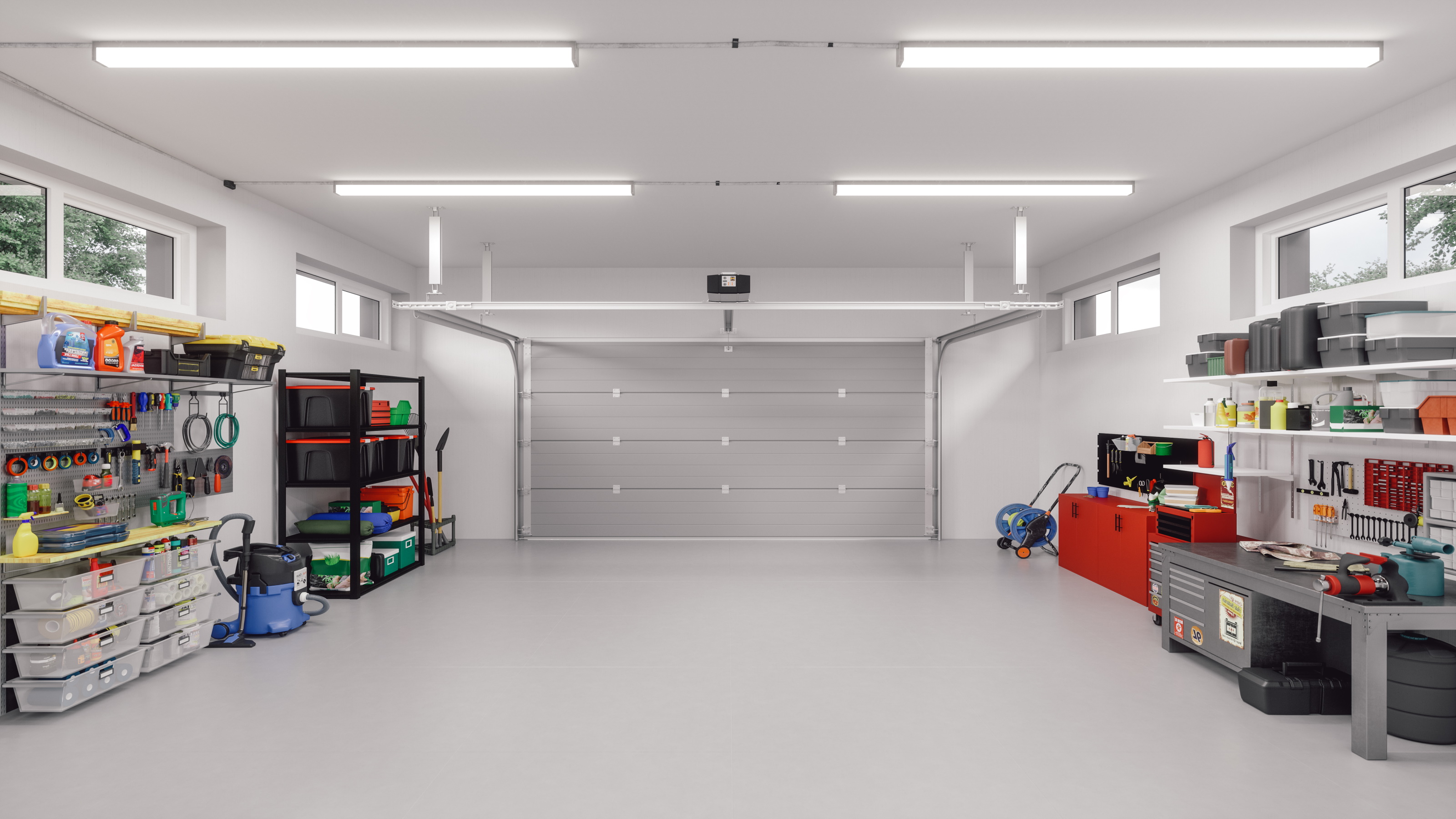What is the best way to heat a garage?
The type of heating you need depends on the way you use your garage. We explain the options

When considering the best way to heat a garage, it helps to consider what you will use the garage for and for how long.
You may, for example, mainly be using it for storage and only occasional woodwork or DIY, or you may be considering many hours a week using it as workshop or home gym. Fortunately, there are options to suit all needs.
Here we explain all the options available and which is the most suitable for your space in the long term as well as what you can do for a short term fix.
What is the best way to heat a garage in the long-term?
It is vital to plan ahead when building or renovating a garage as it will allow you to tailor the heating to the rest of the property and your needs. It may be wise to link it your central heating if the garage is part of a wider renovation or build.
1. Consider installing insulation
Insulating a garage is a simple and inexpensive way of maintaining a comfortable temperature. It is also a good idea if the garage is attached to the house as heat can be lost through the garage, increasing heating bills in the home. But you do need to be wary not to cause any issues when doing so, says Homebuilding & Renovating's insulation expert Tim Pullen.
"Installing insulation will prevent air movement on the wall and moisture penetrating the wall does become a problem," he says If the internal surface of the wall is obviously damp then its cause – poor brickwork or pointing, cracks in the render, failed gutters and the like – needs dealing with before any insulation is installed."
Don't forget the garage floor too, when it comes to adding insulation. Bare garage floors can get extremely cold so installing a layer of insulation can make the space more comfortable.
Tim Pullen adds: "Optimum insulation thickness would be 100mm of rigid foam insulation, giving a U-value of 0.22W/m2K. Minimum ceiling height in habitable rooms would be 2.1m."
2. Installing underfloor heating
Electric underfloor heating is effectively electric wires that are installed under the floor, either in the screed or in bespoke panels or films, and the resistance causes the wires to heat up and warm the floor, which then warms the room.
"Electric underfloor heating warms an area using a thin heating wire placed under the surface of your floor," explains David Hilton, Homebuilding & Renovating's energy expert. "The wires heat up when switched on, radiating up through your floor surface to warm a room. The floor will feel warm underfoot too."
Underfloor heating has become very popular in recent years, typically offering more space and energy-efficient means of heating your home.
Electrician Jonathan Bacon, who is also a car enthusiast says underfloor heating is the way to go for those wanting to protect their cars.
"The heat produced is a more gentle, constant heat when it comes to underfloor heating, which is good for the car because you can then control the heat so that there are no extreme fluctuations in temperature," he explains.
It is also worth considering keeping a dehumidifier, like this Meaco low-energy dehumidifer from Appliances Direct, running to pull the moisture out of the air to give your car the best environment, he adds.
3. Infrared heating electric ceiling panels
These infrared heating panels can be installed in the garage ceiling and radiate heat throughout the room, which can be ideal if you are using the garage to do DIY work or other jobs and need to heat the space quickly.
According to UK business Doormatic Garage Doors, they heat up quickly and don’t require any ventilation, making them clean, compact, and unobtrusive.
"Affordability is one of the biggest pulls of infrared heating, " explains David Hilton. "Infrared heating panels use radiant heat and as such they are specifically designed to heat objects rather than the air, so in certain cases a good insulation level is not always required."

What is the best way to heat a garage in the short-term?
Electric space heaters are a great option as long as your garage has working electrical plugs and you only need to heat the area you are working or relaxing. They are portable, easy to use and cheap, but not very effective unless the room is insulated and can take a while to warm up the space.
Halogen heaters are a type of electric heater but unlike other electric heaters, they work using radiant heat rather than convection. You can take a look at our guide on how much does a halogen heaters cost to run too.
"Typically the least expensive space heater to run, halogen heaters like this one from Argos often require 1200W of electricity, costing just 40p per hour based on current the electricity cap at 34p per kilowatt hour," adds Homebuilding's Amy Reeves.
Other options aren't as suited to larger spaces as they rely on convection. Oil-filled radiators work by using electricity to heat oil with an element inside a reservoir. When the element heats up, the warmth is transferred to the fluid, which then circulates around the appliance and warms its metallic panels. None of the oil is burned as fuel. The radiator starts heating the air already in the room. When the air gets hot it rises and shifts the cold air to the floor.
With fan heaters meanwhile, which again aren't ideal as they use convection,. a metal coil is warmed up, and then the fan blows air over the metal coil, which then drives the heat out and into the room. Fan heaters also present a fire risk, as hot air is being pushed out into a small contained area. This can be extremely uncomfortable and even dangerous if you are doing woodwork and generating dust.
All portable electric, gas, and open fire heaters present a fire risk, and it is vital you are aware of safety issues when using them. The London Fire Brigade offers excellent safety advice here.
Get the Homebuilding & Renovating Newsletter
Bring your dream home to life with expert advice, how to guides and design inspiration. Sign up for our newsletter and get two free tickets to a Homebuilding & Renovating Show near you.
Sam is based in Coventry and has been a news reporter for nearly 20 years. His work has featured in the Mirror, The Sun, MailOnline, the Independent, and news outlets throughout the world. As a copywriter, he has written for clients as diverse as Saint-Gobain, Michelin, Halfords Autocentre, Great British Heating, and Irwin Industrial Tools. During the pandemic, he converted a van into a mini-camper and is currently planning to convert his shed into an office and Star Wars shrine.

